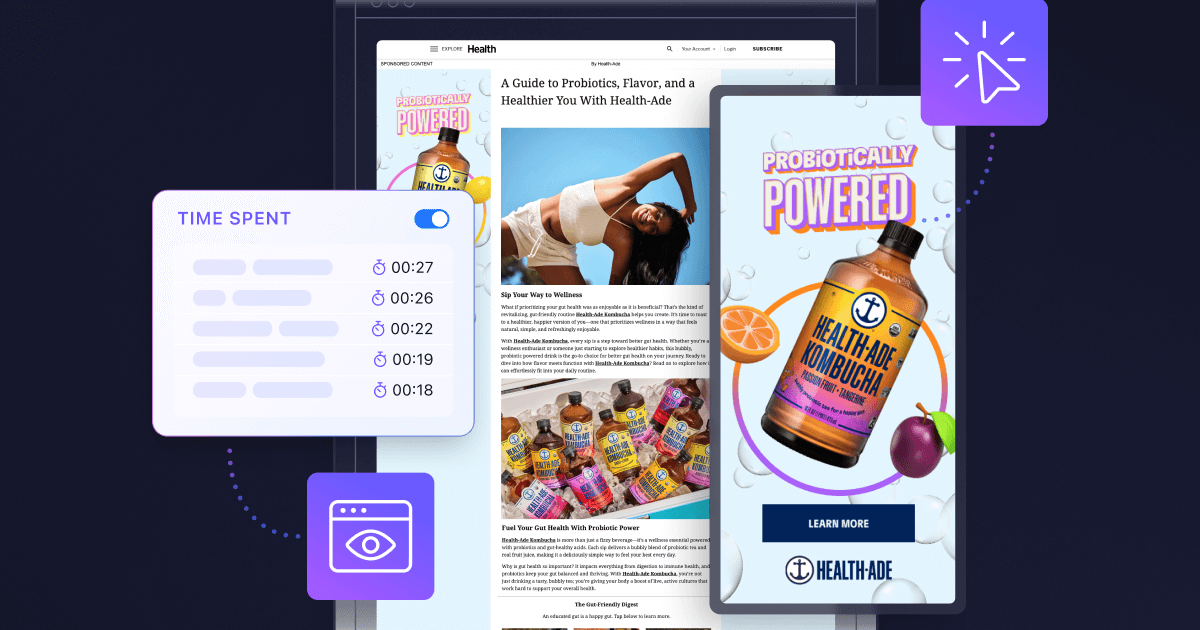Brand Safety in the Age of Contextual Targeting: Ensuring Advertiser Peace of Mind
.png)
In an era where digital advertising reigns supreme, ensuring brand safety has become a paramount concern for advertisers. Contextual targeting has emerged as a powerful tool to address these concerns and provide advertisers with peace of mind. This post delves into the concept of brand safety in the age of contextual targeting, exploring its significance, benefits, and best practices for implementation.
Understanding Brand Safety
Brand safety encompasses a brand's efforts to protect its reputation and ensure that its advertisements are not associated with content that is harmful, offensive, or contrary to its values. Online this translates to safeguarding against ad placements alongside inappropriate or unsafe content such as hate speech, misinformation, or explicit material.
The consequences of failing to uphold brand safety can be dire, including reputational damage, loss of consumer trust, and financial setbacks. Advertisers have no choice but to be constantly vigilant about where their ads appear in the digital ecosystem.
Contextual Targeting: A Solution for Brand Safety
Contextual targeting offers a compelling solution to the brand safety conundrum. Unlike traditional methods that rely on audience demographics and behavioral data, contextual targeting considers the context in which an ad will be placed. It takes into account the text, images, and themes of the webpage, ensuring that ads are contextually relevant and aligned with the content.
One of the most significant advantages of contextual targeting is its ability to reduce the risk of ad misplacement. By analyzing the content of a page, advertisers can be confident that their messages appear in a suitable and brand-safe environment. This not only protects the brand's reputation but also enhances the effectiveness of advertising campaigns by ensuring that ads are shown to an engaged and relevant audience.
Benefits of Contextual Targeting for Brand Safety
- Enhanced Brand Reputation: Advertisers can rest easy knowing that their brand is associated with content that aligns with their values, resulting in an enhanced reputation and greater consumer trust.
- Ad Transparency: Contextual targeting offers transparency in ad placement, enabling advertisers to have better control and visibility over where their ads are displayed.
- Mitigation of Risks: By avoiding inappropriate or harmful content, contextual targeting mitigates the risk of ad-related controversies and potential legal issues.
- Improved Engagement: Ads that are contextually relevant are more likely to capture the attention of viewers, leading to increased engagement and conversion rates.
- Cost Efficiency: Advertisers can optimize their advertising budgets by ensuring that their messages reach the right audience, reducing wasted impressions on irrelevant placements.
Best Practices for Implementing Contextual Targeting
To fully leverage the benefits of contextual targeting for brand safety, advertisers should follow these best practices:
- Define Brand Safety Guidelines: Establish clear guidelines and criteria for what constitutes brand-safe content. This will serve as a foundation for contextual targeting efforts.
- Utilize Advanced Technology: Invest in advanced AI and machine learning tools that can analyze content at scale, ensuring accuracy and efficiency in contextual targeting.
- Regular Monitoring and Updates: Continuously monitor ad placements and update contextual targeting parameters as needed to adapt to changing content landscapes.
- Collaborate with Trusted Partners: Partner with reputable ad platforms and publishers known for their commitment to brand safety to reduce risks.
- Stay Informed: Keep abreast of industry trends and emerging technologies to stay one step ahead in the ever-evolving landscape of digital advertising.
- Test and Optimize: Run A/B tests to evaluate the effectiveness of contextual targeting strategies and make data-driven optimizations.
The Future of Brand Safety
As the digital advertising landscape continues to evolve, brand safety remains a top priority for advertisers. Contextual targeting has emerged as a robust solution that not only safeguards brands from unwanted associations but also enhances the overall advertising experience.
The future of brand safety is likely to be increasingly intertwined with advanced technologies, such as natural language processing and sentiment analysis, to better understand the nuances of content. Advertisers will continue to refine their strategies and invest in tools that ensure their messages resonate with the right audiences in a safe and relevant context.
In conclusion, brand safety in the age of contextual targeting is about much more than just avoiding ad misplacement. It's about protecting a brand's reputation, fostering consumer trust, and optimizing advertising campaigns for maximum impact. By embracing contextual targeting and adhering to best practices, advertisers can navigate the digital landscape with confidence, knowing that their brand is in safe hands. In the world of digital advertising, brand safety is not just a luxury—it's a necessity.

.jpg)


